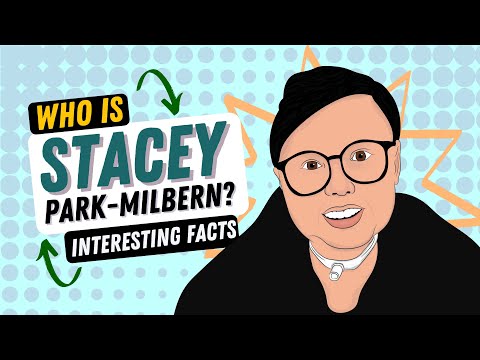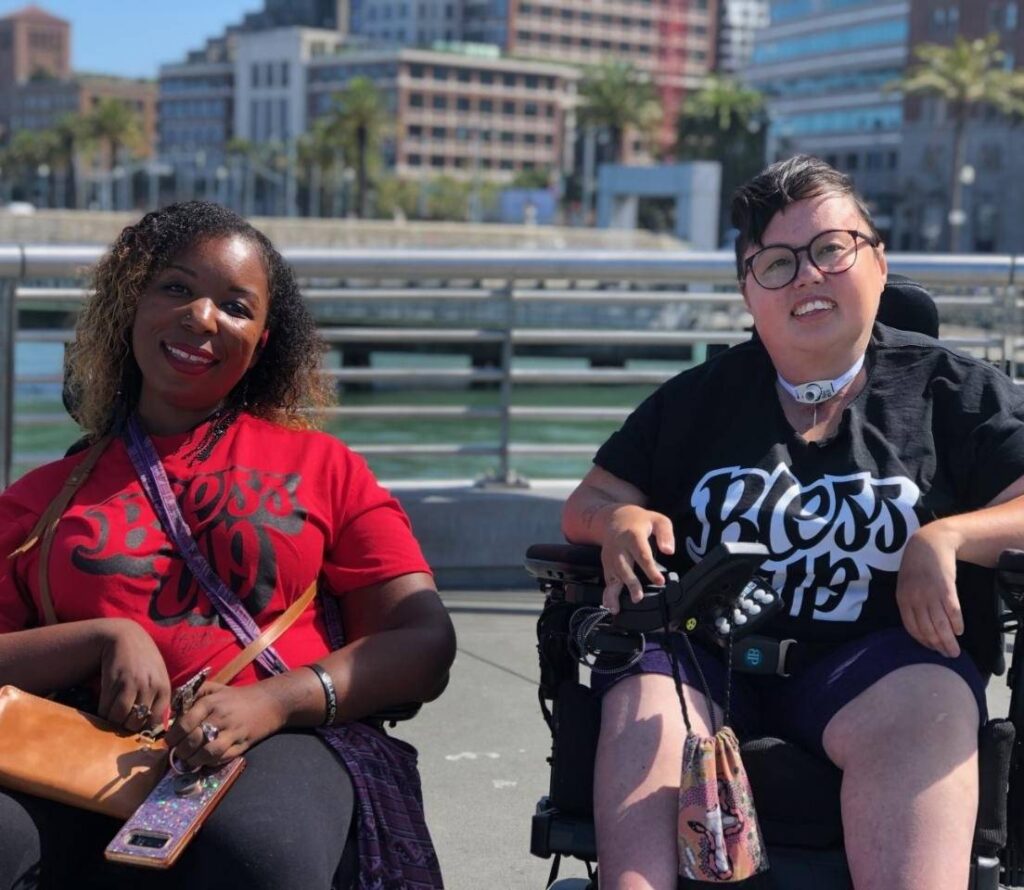

Stacey Park Milbern was a disability rights activist, community organizer, and writer whose work had a profound impact on the disability community. Her legacy and dedication to advocating for disability rights and social justice continue to inspire people all over the world.
Read Eurovision 2023 Song Contest: When Is It?
Biography
Stacey Park Milbern is a sought-after planner and facilitator with experience in program creation, alliance building, and empowering people. Stacey’s origins are in Independent Living; she cut her teeth in leadership positions as a teenager, establishing a statewide cross-disability group and counseling NC Governor Easley in a designated IL role. She began her career as the Community Outreach Director of the National Youth Leadership Network, a national disability rights organization, where she provided technical assistance and training to advocates.


She later became the Director of Programs at the Center for Independent Living, the country’s first non-profit organization led by people with disabilities, where she established two county-wide coalitions, expanded and improved services, and led advocacy efforts with a team of 10.5 FTE. Stacey currently works in Corporate HR at Wells Fargo, counseling supervisors on the ADA. She holds an MBA from Mills College with a focus on non-profit administration. She volunteers with the Disability Justice Culture Club, a group of disabled and neurodivergent LGBT advocates of race.
Read Best Deals on Samsonite Luggage Sets
Early Life of Stacey Park Milbern
Born in 1987 in Seoul, South Korea, Stacey was adopted by a white family in the United States and grew up in a predominantly white community in North Carolina. She was diagnosed with a neuromuscular disability at a young age and relied on a wheelchair for mobility.
Stacey’s experiences as a person with a disability in a society that was not always accommodating inspired her to become an advocate for disability rights. She attended the University of California, Berkeley, where she earned a degree in sociology and became involved in disability activism.


DJCC Co-Founder
Stacey was a co-founder of the Disability Justice Culture Club (DJCC), a collective of activists who sought to center the experiences and leadership of people of color with disabilities. DJCC was instrumental in the development of the disability justice movement, which seeks to challenge ableism and other forms of oppression and build a more inclusive and equitable society for all people with disabilities.
Stacey’s writing and speaking on disability justice were widely recognized and appreciated. She gave talks and workshops on disability justice and intersectionality, which emphasized the importance of recognizing and addressing the ways that different forms of oppression intersect and reinforce each other. She also wrote for a variety of publications, including the Huffington Post and the Disability Visibility Project.
Organizations
In addition to her work with DJCC, Stacey was involved in a variety of other disability rights organizations and initiatives. She served on the board of directors of the California Foundation for Independent Living Centers and was a member of the National Council on Independent Living. She also worked as a consultant and trainer on disability rights and accessibility for a range of organizations and businesses.
Stacey was a fierce advocate for disability rights, but she also recognized the importance of self-care and community support. She was known for her sense of humor and her ability to bring people together. Her friends and colleagues remember her as someone who was deeply committed to building relationships and supporting others.
Stacey Park Milbern Death
Tragically, Stacey passed away in May 2020 at the age of 33. Her death was a devastating loss to the disability community, but her legacy continues to inspire people to fight for disability rights and social justice.
Stacey’s Work
Stacey’s work was guided by the principles of disability justice, which seek to center the experiences of people with disabilities who have been marginalized by ableism, racism, sexism, homophobia, transphobia, and other forms of oppression. Disability justice recognizes that the disability community is diverse and includes people from all backgrounds. It also acknowledges that true liberation for people with disabilities requires addressing all forms of oppression.
Stacey’s Advocacy
Stacey’s advocacy was grounded in her own experiences as a disabled woman of color, but she also recognized the importance of working in solidarity with other marginalized groups. She believed that disability justice was connected to broader struggles for social justice and that building strong coalitions was key to achieving real change.
Stacey’s Legacy
Stacey’s legacy continues to inspire and inform the disability justice movement today. Her writing, speeches, and activism have shaped the way people understand and pursue disability rights and social justice. She reminds us that disability justice is not just about accessibility and accommodation, but about building a more equitable and inclusive world for all people with disabilities.
Conclusion
In conclusion, Stacey Park Milbern was a remarkable disability rights activist whose legacy continues to inspire and guide the disability justice movement. She based her work on a strong dedication to social justice and intersectionality, and she realized that the challenges of people with disabilities are inextricably linked to those of other disadvantaged groups. Disability rights advocates worldwide continue to carry on Stacey’s activism and leadership, even though her soul is no longer with us.
Disability Rights Activist
People have recognized Stacey Park Milbern and her desire for a more accessible world.
“There is no reason for us to feel shame for who we are. We were born into this world exactly as we are. We are who we were meant to be.”
— Stacey Park Milbern
Disability rights activists are individuals who work to promote and protect the rights of people with disabilities. These activists advocate for the full inclusion of people with disabilities in all aspects of society, including education, employment, housing, transportation, and healthcare.
Disability rights activists come from all walks of life, and many have disabilities themselves. They work to increase awareness and understanding of disability issues, challenge ableism and other forms of discrimination, and promote policies and laws that ensure the full participation and empowerment of people with disabilities.
Ed Roberts


Ed Roberts is one of the most well-known disability rights activists in history. He was a pioneer in the disability rights movement in the United States. Although polio immobilized Roberts from the neck down, he went on to become a disability rights champion. He became the first student with serious impairments to attend the University of California, Berkeley. Additionally, he was instrumental in establishing the first Center for Independent Living, which provided services and support for people with disabilities.
Judith Heumann


Judith Heumann’s leadership in the disability rights movement spans over 40 years. She has held roles as a teacher, advocate, and government official. Her contributions to the development of disability rights laws and policies are significant and continue to have a lasting impact. Heumann’s work has paved the way for greater inclusion and accessibility for people with disabilities. The Americans with Disabilities Act (ADA) is one such policy that Heumann played a key role in developing.
Stacey Park Milbern


In the disability justice movement, leaders like Stacey Park Milbern have emerged as disability rights activists. This movement aims to address the ways that different forms of oppression intersect and reinforce each other. Disability justice activists recognize the diverse disability community, including people from all backgrounds, and work to build coalitions with other marginalized groups. Their ultimate goal is to achieve broader social justice goals.
Disability rights activists use a variety of strategies to achieve their goals, including direct action, grassroots organizing, litigation, and policy advocacy. They work to change societal attitudes towards people with disabilities, challenge stereotypes and misconceptions, and promote positive images of disability. They also work to ensure that people with disabilities have access to the resources and services they need to live full and meaningful lives.
Conclusion
In conclusion, disability rights activists are individuals who work tirelessly to promote and protect the rights of people with disabilities. The development of disability rights laws and policies has been critically influenced by these activists. They continue to advocate for the full inclusion of people with disabilities in all aspects of society. These activists come from all walks of life and use a variety of strategies to achieve their goals. However, they all share a deep commitment to social justice and the empowerment of people with disabilities.
FAQs
1. What is Stacey Park Milbern’s disability?
Stacey Park Milbern was born on May 19, 1987, at the US Army Hospital in Seoul, with hereditary muscular dystrophy. (CMD). Her parents were both White Americans, and her mother was Korean.
2. How old was Stacey Milbern when she died?
33 years (1987–2020)
Stacey Park Milbern, a well-known Disability Justice and Civil Rights campaigner, died suddenly on May 19, 2020, at the age of 33. Her death was the result of surgical problems in Stanford, California. Stacey, an Oakland, California resident, had a long experience as a leader and agitator.
3. What disability justice activist Stacey Park Milbern taught us?
Stacey Park Milbern was a disability rights campaigner who was Korean-American. She was a dynamic leader who fought for the inclusion of people of color, transsexual people, and gender-expansive people. Her battle was to include them in the dominant civil rights movement. Stacey Park Milbern died on her 33rd birthday, May 19, 2020.
4. What is the thing on Stacey Park Milbern neck?
She’s wearing a black shirt and has a trach tube visible at the base of her neck.







2 Comments